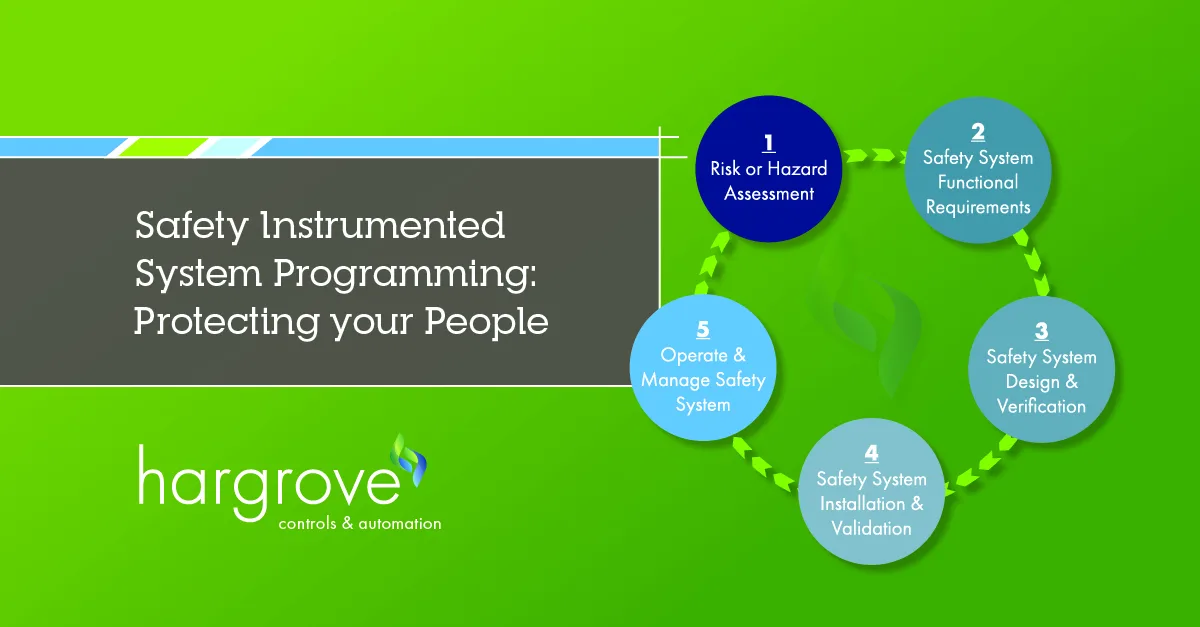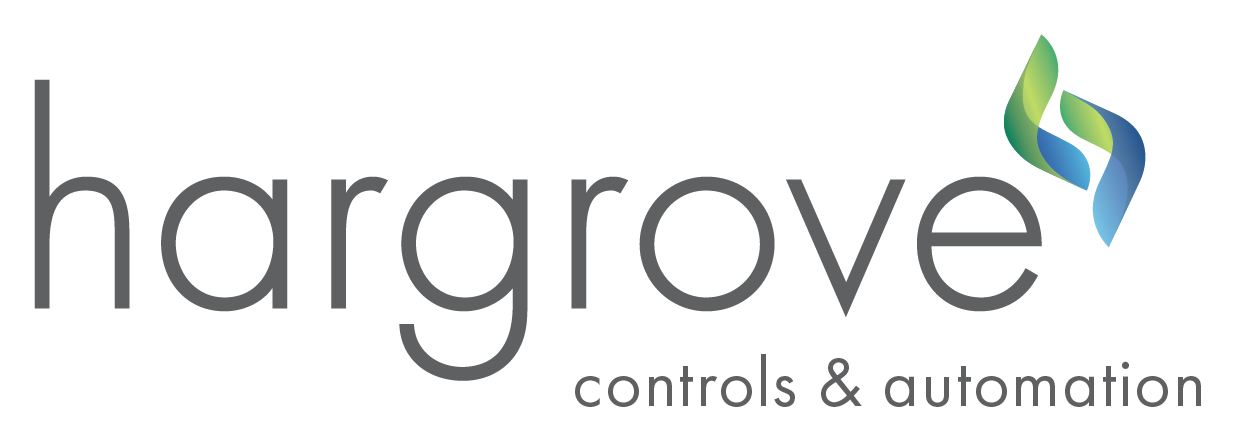Safety Instrumented System Programming: Protecting your People

Safety is a critical component in any industry – and mistakes in this area are not only costly in terms of shutdowns or equipment damage but can have lasting effects on your personnel.
Don’t be intimidated or overwhelmed when it comes to addressing hazards at your facility. Learn how to approach safety through an SIS life-cycle lens and get insight into how these systems are programmed using the strategies below.
Addressing Hazards at Your Facility is an Ongoing Process
The SIS life-cycle defines an overall approach for process industry sites to support achievement of site risk targets by using programmable electronic systems.

The first step in the Safety Life-cycle is Hazard and Risk Assessment. This step takes stock of all the potential hazards in a facility.
To practice this step, brainstorm three key considerations with your team:
- What are all the possible hazards that might be in the facility?
- For each hazard, how likely is it to occur?
- What are the consequences of each hazard if it occurs?
Safety in Layers
Consider your car. Statistics show that driving could be a relatively dangerous activity. Therefore, there is a risk associated with driving—or even riding in a vehicle. So, what can be done to prevent some of these risks? Layers of safety were created to minimize risks.
SIF Requirement Definition
As a society, we build driving safety through preventive measures like road signs, lines, and signs and traffic indicators on your mirror. We also work to minimize the consequences of a car accident through safety features like air bags, seat belts, and crumple zones.
We can apply these same principles to manufacturing processes. We look at potential hazards and try to identify how they could be prevented and, if they do occur, how consequences can be minimized. Once we compile a list of potential hazards, numbers and levels of magnitude are applied to each hazard to determine how the risks should be addressed. It helps us to classify low- and high-level risks, so we know how many layers of protection are needed to reduce the risk to an acceptable level.
SIF Design
The next step is to determine what protections are in place to prevent a hazardous event from occurring or to minimize the effects if it does.
Adding a Safety Instrumented Function (SIF) is a common approach to mitigating hazardous scenarios. A SIF addresses one scenario while a Safety Instrumented System (SIS) is the whole system for a process area that may contain several SIF’s. If a SIF is specified for a given level of risk reduction, all details of the scenario need to be specified exactly.
A Safety Requirement Specification (SRS) document chronicles every detail necessary to implement the SIF. This includes what is to be measured, what action is to be taken, at what point that action takes place, how to test the SIF, SIF performance requirements, and all details needed to program the SIF.
How Do You Program Something to be Safe?
If you’re going to build something, you need to start with a detailed plan. You wouldn’t just start building a house—you start by designing the layout. The same goes for a safety system. You start by designing the SIF.
How does a SIF, such as a sensor, know if levels are too high? If you need to put a sensor in place to determine if pressure inside a vessel is too high, that means you’ll also need to program a computer to read that sensor and give it parameters for context. All aspects of that hazard and what conditions make that hazard risky must be addressed in the programming. If it’s a particularly risky hazard, you might need to put in additional fail-safes, like an additional sensor.
Let’s say you have a pressure vessel that runs at about 50 pounds of pressure (PSI) in normal conditions. If you hit 100 PSI, the vessel will burst, and people could be injured. You decide a pressure sensor is the best way to address this hazard. That sensor will be programmed to know that a reading of ‘100’ is dangerous.
Before you get to the point of 100 PSI, you want the operator to know that something is wrong. At 70 PSI, the sensor will give a warning letting the operator know that actions must be taken. You will also need a way to know if the sensor has failed.
When you’re programming the SIS, not only are you programming the action itself, but also time delays, where you need redundancies, bad signal detection, operator alerts and alarms, bypassing, manual activation, SIF reset, and when the SIF is active.
Programming with Purpose
The most important part of the SIS programming phase is for the programmer to understand the goal of the SIF. This may sound simple, but it can be easy to get lost in details and become sidetracked. A good programmer will fully understand the hazard and what they’re trying to protect against.
The programmer should take into consideration the following:
- Does the programmer understand that startups tend to be the most dangerous part of a process?
- Do they know where redundancies should be placed?
- Have they taken into consideration the weather conditions for the plant?
- Do they have a clear understanding of the process itself and what a safe state looks like?
It is critical for an engineer to have a complete comprehension of the hazard and the process. This is why choosing the right, experienced engineer to program an SIS is important.
Besides understanding the basic function of the SIF, an experienced process safety engineer also understands how to build in functions that are required to make the SIS more effective and safer. These functions consider diagnostics and error checking, what to do with those conditions, voting degradation if a sensor fails, and how to bypass the function if it needs testing or repair.
Working with Industry Specialists
When it comes to safety, there is no room for error. It’s an important responsibility to get it right the first time. Our industry specialists can work with you to understand the entire picture and facilitate the right plan to meet your objectives and needs.
When lives are on the line, don’t get lost in the weeds. With our team of TÜV Certified Process Safety Engineers, Hargrove Controls & Automation is here to guide you through the Safety Life-cycle and help you achieve a safer facility. Contact us to learn more.

